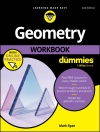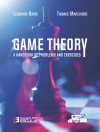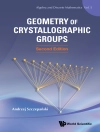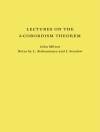A gentle introduction to the geometry of convex sets in n-dimensional space
Geometry of Convex Sets begins with basic definitions of the concepts of vector addition and scalar multiplication and then defines the notion of convexity for subsets of n-dimensional space. Many properties of convex sets can be discovered using just the linear structure. However, for more interesting results, it is necessary to introduce the notion of distance in order to discuss open sets, closed sets, bounded sets, and compact sets. The book illustrates the interplay between these linear and topological concepts, which makes the notion of convexity so interesting.
Thoroughly class-tested, the book discusses topology and convexity in the context of normed linear spaces, specifically with a norm topology on an n-dimensional space.
Geometry of Convex Sets also features:
* An introduction to n-dimensional geometry including points; lines; vectors; distance; norms; inner products; orthogonality; convexity; hyperplanes; and linear functionals
* Coverage of n-dimensional norm topology including interior points and open sets; accumulation points and closed sets; boundary points and closed sets; compact subsets of n-dimensional space; completeness of n-dimensional space; sequences; equivalent norms; distance between sets; and support hyperplanes ·
* Basic properties of convex sets; convex hulls; interior and closure of convex sets; closed convex hulls; accessibility lemma; regularity of convex sets; affine hulls; flats or affine subspaces; affine basis theorem; separation theorems; extreme points of convex sets; supporting hyperplanes and extreme points; existence of extreme points; Krein-Milman theorem; polyhedral sets and polytopes; and Birkhoff’s theorem on doubly stochastic matrices
* Discussions of Helly’s theorem; the Art Gallery theorem; Vincensini’s problem; Hadwiger’s theorems; theorems of Radon and Caratheodory; Kirchberger’s theorem; Helly-type theorems for circles; covering problems; piercing problems; sets of constant width; Reuleaux triangles; Barbier’s theorem; and Borsuk’s problem
Geometry of Convex Sets is a useful textbook for upper-undergraduate level courses in geometry of convex sets and is essential for graduate-level courses in convex analysis. An excellent reference for academics and readers interested in learning the various applications of convex geometry, the book is also appropriate for teachers who would like to convey a better understanding and appreciation of the field to students.
I. E. Leonard, Ph D, was a contract lecturer in the Department of Mathematical and Statistical Sciences at the University of Alberta. The author of over 15 peer-reviewed journal articles, he is a technical editor for the Canadian Applied Mathematical Quarterly journal.
J. E. Lewis, Ph D, is Professor Emeritus in the Department of Mathematical Sciences at the University of Alberta. He was the recipient of the Faculty of Science Award for Excellence in Teaching in 2004 as well as the PIMS Education Prize in 2002.
Daftar Isi
Preface ix
1 Introduction to N-Dimensional Geometry 1
1.1 Figures in N-Dimensions 1
1.2 Points, Vectors, and Parallel Lines 2
1.2.1 Points and Vectors 2
1.2.2 Lines 4
1.2.3 Segments 11
1.2.4 Examples 12
1.2.5 Problems 18
1.3 Distance in N-Space 19
1.3.1 Metrics 19
1.3.2 Norms 20
1.3.3 Balls and Spheres 23
1.4 Inner Product and Orthogonality 29
1.4.1 Nearest Points 32
1.4.2 Cauchy-Schwarz Inequality 36
1.4.3 Problems 41
1.5 Convex Sets 41
1.6 Hyperplanes and Linear Functionals 45
1.6.1 Linear Functionals 45
1.6.2 Hyperplanes 52
1.6.3 Problems 66
2 Topology 69
2.1 Introduction 69
2.2 Interior Points and Open Sets 72
2.2.1 Properties of Open Sets 80
2.3 Accumulation Points and Closed Sets 83
2.3.1 Properties of Closed Sets 88
2.3.2 Boundary Points and Closed Sets 88
2.3.3 Closure of a Set 90
2.3.4 Problems 92
2.4 Compact Sets in R 94
2.4.1 Basic Properties of Compact Sets 99
2.4.2 Sequences and Compact Sets in R 104
2.4.3 Completeness 106
2.5 Compact Sets in R n 108
2.5.1 Sequences and Compact Sets in R n 112
2.5.2 Completeness 115
2.6 Applications of Compactness 117
2.6.1 Continuous Functions 117
2.6.2 Equivalent Norms on R n 119
2.6.3 Distance between Sets in R n 121
2.6.4 Support Hyperplanes for Compact Sets in R n 127
2.6.5 Problems 130
3 Convexity 135
3.1 Introduction 135
3.2 Basic Properties of Convex Sets 137
3.2.1 Problems 144
3.3 Convex Hulls 146
3.3.1 Problems 155
3.4 Interior and Closure of Convex Sets 157
3.4.1 The Closed Convex Hull 161
3.4.2 Accessibility Lemma 162
3.4.3 Regularity of Convex Sets 164
3.4.4 Problems 169
3.5 Affine Hulls 170
3.5.1 Flats or Affine Subspaces 170
3.5.2 Properties of Flats 172
3.5.3 Affine Basis 173
3.5.4 Problems 178
3.6 Separation Theorems 180
3.6.1 Applications of the Separation Theorem 192
3.6.2 Problems 196
3.7 Extreme Points of Convex Sets 199
3.7.1 Supporting Hyperplanes and Extreme Points 199
3.7.2 Existence of Extreme Points 203
3.7.3 The Krein-Milman Theorem 205
3.7.4 Examples 207
3.7.5 Polyhedral Sets and Polytopes 210
3.7.6 Birkhoff’s Theorem 220
3.7.7 Problems 224
4 Helly’s Theorem 227
4.1 Finite Intersection Property 227
4.1.1 The Finite Intersection Property 227
4.1.2 Problems 229
4.2 Helly’s Theorem 230
4.3 Applications of Helly’s Theorem 235
4.3.1 The Art Gallery Theorem 235
4.3.2 Vincensini’s Problem 242
4.3.3 Hadwiger’s Theorem 249
4.3.4 Theorems of Radon and Carathéodory 257
4.3.5 Kirchberger’s Theorem 260
4.3.6 Helly-type Theorems for Circles 262
4.3.7 Covering Problems 266
4.3.8 Piercing Problems 274
4.3.9 Problems 276
4.4 Sets of Constant Width 277
4.4.1 Reuleaux Triangles 277
4.4.2 Properties of Sets of Constant Width 279
4.4.3 Adjunction Complete Convex Sets 285
4.4.4 Sets of Constant Width in the Plane 293
4.4.5 Barbier’s Theorem 294
4.4.6 Constructing Sets of Constant Width 297
4.4.7 Borsuk’s Problem 304
4.4.8 Problems 309
Bibliography 311
Index 317
Tentang Penulis
I. E. Leonard, Ph D, was a contract lecturer in the Department of Mathematical and Statistical Sciences at the University of Alberta. The author of over 15 peer-reviewed journal articles, he is a technical editor for the Canadian Applied Mathematical Quarterly journal.
J. E. Lewis, Ph D, is Professor Emeritus in the Department of Mathematical Sciences at the University of Alberta. He was the recipient of the Faculty of Science Award for Excellence in Teaching in 2004 as well as the PIMS Education Prize in 2002.












